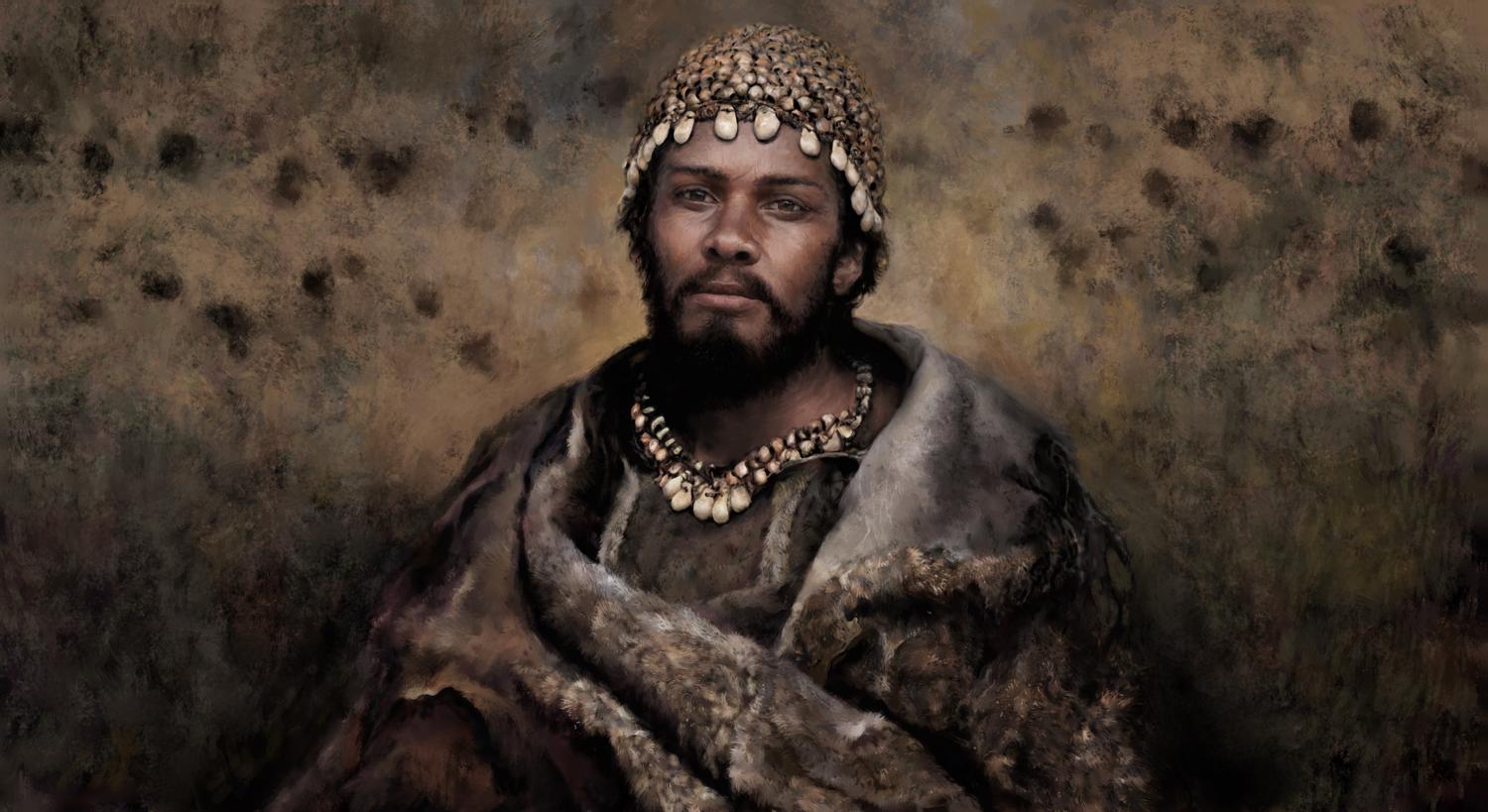News
01.03.2023
Ice Age Survivors
Large-scale genomic analysis documents the migrations of Ice Age hunter-gatherers over a period of 30,000 years – they took shelter in Western Europe but died out on the Italian peninsula
With the largest dataset of prehistoric European hunter-gatherer genomes ever generated, an international research team has rewritten the genetic history of our ancestors. This study was led by researchers from the University of Tübingen and the Senckenberg Center for Human Evolution and Palaeoenvironment, Peking University and the Max Planck Institute for Evolutionary Anthropology in Leipzig, in collaboration with 125 international scientists. The results were published in the journal Nature.
The team analysed the genomes of 356 prehistoric hunter gatherers from different archaeological cultures – including new data sets of 116 individuals from 14 different European and Central Asian countries. Modern humans began to spread across Eurasia around 45,000 years ago but previous research showed that the first modern humans that arrived in Europe did not contribute to later populations. This study focuses on the people who lived between 35,000 and 5,000 years ago and that are, at least partially, the ancestors of the present-day population of Western Eurasia, including – for the first time – the genomes of people who lived during the Last Glacial Maximum (LGM), the coldest phase of the last Ice Age, around 25,000 years ago.
Climatic refugium or dead end?
Surprisingly, the research team found that populations from different regions associated with the Gravettian culture, which was widespread across the European continent between 32,000 and 24,000 years ago, were not closely related to each other. They were linked by a common archaeological culture: they used similar weapons and produced similar portable art. Genetically, however, the populations from western and southwestern Europe (today's France and Iberia) differed from contemporaneous populations from central and southern Europe (today's Czech Republic and Italy).
Furthermore, the gene pool of the western Gravettian populations is found continuously for at least 20,000 years: their descendants who are associated with the Solutrean and Magdalenian cultures stayed in southwestern Europe during the coldest period of the last Ice Age (between 25,000 and 19,000 years ago) and later spread north-eastward to the rest of Europe. "With these findings, we can for the first time directly support the hypothesis that during the Last Glacial Maximum people found refuge in the climatically more favourable region of southwestern Europe" says first author Cosimo Posth.
The Italian peninsula was previously considered to be another climatic refugium for humans during the LGM. However, the research team found no evidence for this, on the contrary: hunter-gatherer populations associated with the Gravettian culture and living in central and southern Europe are no longer genetically detectable after the LGM. People with a new gene pool settled in these areas, instead. "We find that individuals associated with a later culture, the Epigravettian, are genetically distinct from the area‘s previous inhabitants," says co-author He Yu. "Presumably, these people came from the Balkans, arrived first in northern Italy around the time of the glacial maximum and spread all the way south to Sicily."
Large-scale genetic replacement
The analysed genomes also show that the descendants of these Epigravettian inhabitants of the Italian peninsula spread across the rest of Europe about 14,000 years ago, replacing populations associated with the Magdalenian culture. The research team describes a large-scale genetic replacement that may have been caused, in part, by climatic changes that forced people to migrate: "At that time, the climate warmed up quickly and considerably and forests spread across the European continent. This may have prompted people from the south to expand their habitat. The previous inhabitants may have migrated to the north as their habitat, the ‘mammoth’ steppe, dwindled," says Johannes Krause, the study's senior author.
Furthermore, the findings show that there had been no genetic exchange between contemporaneous hunter-gatherer populations in western and eastern Europe for more than 6,000 years. Interactions between people from central and eastern Europe can only be detected again from 8,000 years ago. "At that time, hunter-gatherers with distinct ancestries and appearances started to mix with each other. They were different in many aspects, including their skin and eye colour," says He Yu.
During this time agriculture and a sedentary lifestyle spread from Anatolia to Europe. "It is possible that the migration of early farmers into Europe triggered the retreat of hunter-gatherer populations to the northern edge of Europe. At the same time, these two groups started mixing with each other, and continued to do so for around 3,000 years," Krause says.
"The data we gained from this study provides us with astonishingly detailed insights into the developments and encounters of West Eurasian hunter-gatherer groups," Posth summarises. "Further interdisciplinary research will clarify which exact processes were responsible for the genetic replacements of entire Ice Age populations.”
Publication:
Posth, C., Yu, H., Ghalichi, A., Rougier, H., Crevecoeur, I., Huang, Y., et al. (in press). Paleogenomics of upper paleolithic to neolithic European hunter-gatherers. Nature, Doi: https://doi.org/10.1038/s41586-023-05726-0
Contact:
Prof. Dr. Cosimo Posth
University of Tübingen
Institut für Naturwissenschaftliche Archäologie
Senckenberg Centre for Human Evolution and Palaeoenvironment
Phone +49 7071 29-74089
cosimo.posthspam prevention@uni-tuebingen.de
Prof. Dr. He Yu
School of Life Sciences, Peking University
yuhespam prevention@pku.edu.cn
Prof. Dr. Johannes Krause
Max-Planck-Institut für Evolutionäre Anthropologie
krausespam prevention@eva.mpg.de
Contact for press:
Eberhard Karls Universität Tübingen
Public Relations Department
Dr. Karl Guido Rijkhoek
Director
Antje Karbe
Press Officer
Phone +49 7071 29-76789
Fax +49 7071 29-5566
antje.karbespam prevention@uni-tuebingen.de
All press releases by the University of Tübingen

